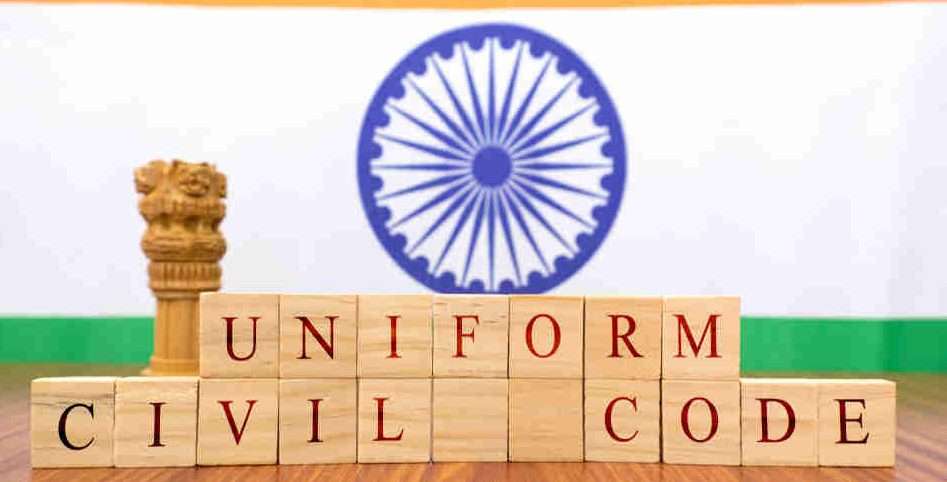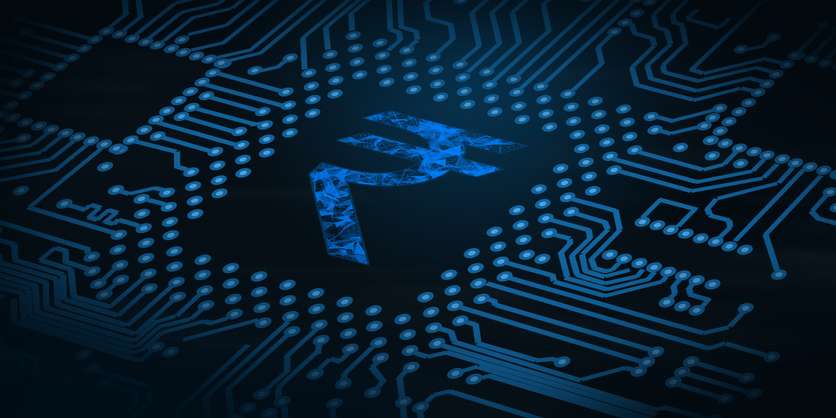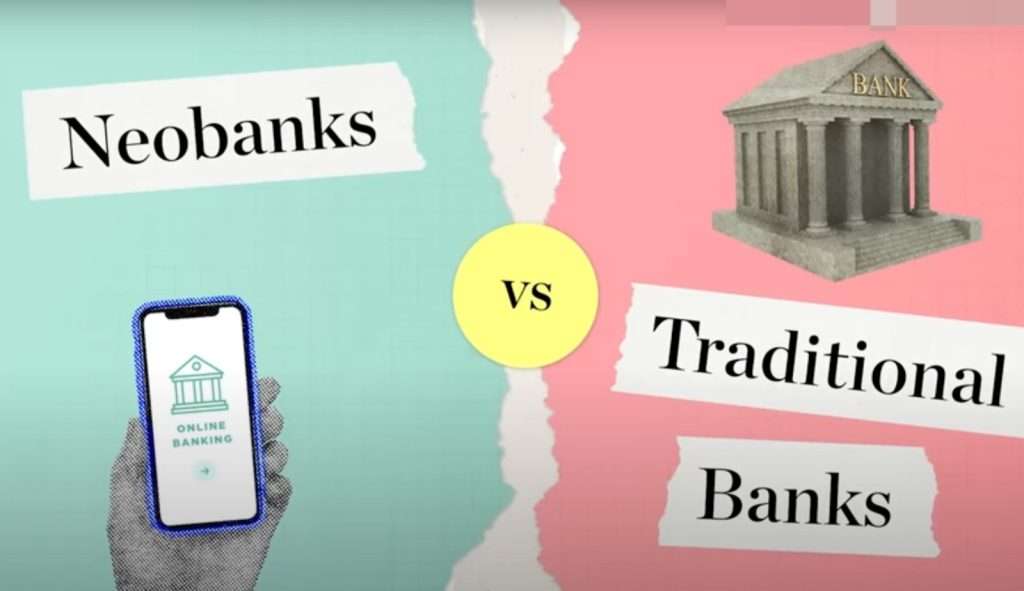“Moonlighting: The Strong Pros and Cons in 2023”

Theme: Wipro fired more than 300 employees because of moonlighting. On August 20, 2022, Wipro’s chairman Rishad Premji tweeted against moonlighting and labelled it “cheating- clear and simple.” Moonlighting refers to the act of working at an extra job or performing work for pay in addition to one’s primary job without informing the principal employer. It is also known as having a side hustle or a part-time job in addition to one’s full-time job. For example, A teacher who works as a Content writer on the weekends could be moonlighting. A software engineer who freelances on the side could also be considered to be moonlighting. In both cases, the individuals have a primary job and are also working additional jobs or performing extra work for pay on the side. Why do employees prefer/do Moonlighting: Financial reasons: Many people work more hours to pay off debts, save for a specific purpose, or simply increase their overall income. Professional development: Working a second job can give people the chance to expand their knowledge or expertise in a particular industry, which is good for their career development. Work-life balance: Since moonlighting gives one more control over their work schedule and work-life balance, some people may find it more attractive. Personal fulfilment: Taking on the extra job can be personally rewarding for certain people who like the challenge and thrill of working two jobs. Job dissatisfaction: Some people might moonlight to pursue alternative chances since they are dissatisfied with their regular employment. Companies that allow Moonlighting:- Flipkart, Swiggy, and Zomato. Disadvantages of Moonlighting: Time constraints: Working at a second job might take up a lot of time and may leave less time for other interests, such as time with friends, family, and hobbies. Physical and mental fatigue: Working two jobs can be physically and mentally exhausting, which can result in burnout and reduced productivity. Risk of Job loss: Some employers restrict employees from taking on a second job, and those that do may require permission. An employee runs the danger of losing their main job if they moonlight without permission. Legal issues: Depending on the second job’s nature, a worker could need to obtain additional licenses or permissions or be required to pay taxes on the extra income. Risk of injury: If the second job involves physical labour or other potentially hazardous activities, there is an increased risk of injury. This could lead to lost income and additional medical expenses. Laws on Moonlighting:- legal or illegal Moonlighting, or working a second job in addition to one’s regular employment, is generally legal in India. However, there may be some restrictions on moonlighting depending on the terms of an individual’s employment contract and the nature of the work being done. For example, an employee may be prohibited from working a second job if it conflicts with their primary job duties or if it is in competition with their employer’s business. It is generally a good idea for an employee to disclose their moonlighting activities to their employer and to ensure that they are not violating any terms of their employment agreement or engaging in any illegal activities. Infosys does a U-turn: Allows workers to take on freelance work with managers’ prior approval. Conclusion: In conclusion, moonlighting is generally legal in India, but employees need to be aware of any restrictions on moonlighting that may be outlined in their employment contract and to ensure that they are not violating any laws or company policies. Employees should also consider the potential impact that moonlighting can have on their primary job, including the possibility of burnout and reduced productivity. While moonlighting can be a good way to earn additional income and gain new skills and experience, it is important for employees to carefully consider the potential risks and rewards before taking on a second job.
“Future of IT Industry: A Powerful Tech Forecast 2023”

Future of IT Industry The IT industry is set to grow exponentially in the upcoming times. According to reports, the global IT industry is expected to reach $5 trillion by 2024. Emerging technologies like artificial intelligence, blockchain, and cloud computing will play a crucial role in shaping the future of the IT industry. Moreover, the COVID-19 pandemic has accelerated digital transformation, further boosting the demand for IT services. Future Trends of IT Industry: The IT industry is constantly evolving, with emerging technologies and trends shaping the future. Here are some of the upcoming trends in IT with examples and data: Artificial Intelligence (AI): AI is revolutionizing the way we work, communicate, and live. The global AI market is projected to reach $309.6 billion by 2026, growing at a CAGR of 39.7%. Examples include chatbots, virtual assistants, and image recognition software. Internet of Things (IoT): IoT refers to the network of interconnected devices that can communicate. The global IoT market is expected to reach $1.5 trillion by 2027, growing at a CAGR of 10.1%. Examples include smart homes, wearables, and industrial IoT. Cybersecurity: With the increasing threat of cyberattacks, cybersecurity has become a critical concern for organizations. The global cybersecurity market is projected to reach $248.26 billion by 2023, growing at a CAGR of 10.6%. Examples include firewalls, anti-virus software, and encryption. Cloud Computing: Cloud computing enables users to access computing resources over the internet. The global cloud computing market is expected to reach $832.1 billion by 2025, growing at a CAGR of 17.5%. Examples include SaaS, PaaS, and IaaS. Quantum Computing: Quantum computing uses quantum-mechanical phenomena to perform computations. The global quantum computing market is expected to reach $2.2 billion by 2026, growing at a CAGR of 30.2%. Examples include IBM Q System One, D-Wave Systems, and Honeywell Quantum Solutions. Edge Computing: Edge computing brings computing resources closer to the source of data, reducing latency and improving the user experience. The global edge computing market is projected to reach $15.7 billion by 2025, growing at a CAGR of 34.1%. Examples include autonomous vehicles, smart cities, and IoT devices. Robotic Process Automation (RPA): RPA uses software bots to automate repetitive and manual tasks, improving efficiency and productivity. The global RPA market is expected to reach $3.97 billion by 2025, growing at a CAGR of 33.6%. Examples include Automation Anywhere and Blue Prism. Virtual and Augmented Reality (VR/AR): VR/AR technologies enable immersive and interactive experiences, transforming the way we learn, work, and play. The global VR/AR market is projected to reach $125.35 billion by 2026, growing at a CAGR of 42.2%. Examples include Oculus VR, Microsoft HoloLens, and Magic Leap. 5G Technology: 5G technology enables faster and more reliable internet connections, improving the performance of IoT devices and enabling new applications. The global 5G technology market is expected to reach $667.90 billion by 2026. Blockchain: Blockchain technology provides a secure and transparent way to record and verify transactions, improving trust and efficiency in various industries. The global blockchain market is projected to reach $72 billion by 2026. Examples include Bitcoin, Ethereum, and Ripple. These top 10 upcoming trends in IT are set to transform how we live and work, creating new opportunities and challenges for businesses and individuals alike. Organizations must stay updated with these trends and embrace innovation to remain competitive in the ever-evolving IT landscape. Advantages of upcoming trends in IT: Increased efficiency and productivity: The adoption of new IT trends such as automation, machine learning, and artificial intelligence can help streamline processes, eliminate redundancies, and improve overall productivity. Improved decision-making: With the help of data analytics and business intelligence tools, organizations can make better-informed decisions based on real-time insights and predictive analytics. Enhanced customer experience: With the use of chatbots, virtual assistants, and other customer service automation tools, organizations can provide faster and more personalized customer service, leading to improved customer satisfaction. Increased security: The use of blockchain technology and other security measures can help protect against data breaches and cyber-attacks, ensuring that sensitive information is kept safe. Remote work capabilities: With the rise of remote work, the adoption of IT trends like cloud computing and collaboration tools can enable employees to work from anywhere, increasing flexibility and productivity. Disadvantages of upcoming trends in IT: Increased costs: Adopting new IT trends can require significant investments in hardware, software, and training investments or organizations with limited budgets may struggle to keep up with the latest technologies. Cybersecurity risks: As more devices and systems are connected through the Internet of Things, there is an increased risk of cybersecurity threats such as data breaches, hacks, and identity theft. It’s important businesses need to prioritize measures to protect against these threats. Privacy concerns: The collection and use of data by new IT trends such as artificial intelligence and machine learning can raise privacy concerns. Organizations must be transparent about their data collection practices and implement safeguards to protect customer privacy. Dependence on technology: While new IT trends can improve efficiency and productivity, they also create a dependence on technology. Organizations may struggle to operate without these technologies, leading to potential disruption in the event of system failures or outages. Impact on jobs: Automation and automating and digitizingead to job displacement for workers in certain industries. While new IT trends can create new jobs in areas like data analytics and cybersecurity, there may be a temporary mismatch between available jobs and displaced workers. Examples of potential disadvantages of upcoming IT trends include: Autonomous vehicles: While self-driving cars and other autonomous vehicles can offer benefits like improved safety and efficiency, they also raise concerns about job displacement for drivers and potential security risks in the event of system failures. Artificial intelligence: The use of AI technologies can lead to job displacement for workers in industries like customer service and data entry. There are also concerns about the ethical implications of AI and the potential for bias in decision-making algorithms. Virtual reality: While VR technologies can provide immersive experiences for users, they may also
Work life balance – Myth or Reality 2023

Theme:- In India around 75% of people are not able to manage their personal life as well as their professional life. “Invest in your work life balance, time with friends and family is as important as time at work”. What is Work life balance? It is a state of balance between one’s professional life and personal life. Where a person equally prioritizes his personal life as well as his one’s career. When creating a schedule that works for you, think about the best way to achieve balance at work and in your personal life. Work-life balance is less about dividing the hours in your day evenly between work and personal life and, instead, is more about having the flexibility to get things done in your professional life while still having time and energy to enjoy your personal life. Major reasons for an unbalanced work life are stress, longer working hours, increased responsibilities, and many more. Why is it important:- According to the recent work survey of 2019 by Mavenlink, it is noted that 62% of the respondents consider work-life balance as a crucial aspect of a company’s culture. Ways to achieve a healthy work life balance:- Use your PTO(Paid time off leave):-There must be boundaries set between work time and time off. In the US around 55% of American workers don’t use their PTO because of their workload, but every person needs to take time to recharge to become more creative and better. Find the right company culture:- One must look for a job with a flexible working schedule, monetary and non-monetary benefits, a remote workplace, and employee engagement activities. Do what you love:– find a job that matches your passion so you’ll be ultimately happier with work and life. Take breaks while working:- According to the survey, after working for 52 minutes you must take a break of 10 minutes to refresh and re-engage your brain in work without losing focus. Prioritizing tasks:- Better planning leads to effective outcomes which help in unnecessary time delays and reduced stress. Common myths of work life balance:-
Does India require a uniform civil code 2023 – A strong study

Theme: The Supreme Court of India argued for the need for a standard civil code in October 2015 and stated that “This cannot be allowed, else every religion will claim that it has the authority to rule certain issues as a matter of its law. What is Uniform Civil Code: The idea of having a single set of laws that would apply to all Indian people, regardless of their religions, is known as the “uniform civil code” in India. Countries that have adopted Uniform civil codes are Saudi Arabia, Turkey, Egypt, Malaysia, Nigeria, etc. The UCC bill represents an effort to carry out this objective. What makes Article 44 crucial: A unified civil code is required by Article 44 of the Indian Constitution, which is regarded as being important and disputed for several reasons. First of all, it aims to ensure that all Indian people are treated equally under the law, regardless of their religion and is seen as a fundamental concept of secularism and equality. Second, because it intends to replace the variety of personal laws already in force in India with a unified set of rules that apply to all residents, it is seen as a way of strengthening national unity. Finally, because it touches on sensitive subjects like religion and personal beliefs, it is seen as a very political and delicate problem. Despite the constitutional mandate, this has made it challenging for succeeding administrations to take action toward creating a universal civil code. History of Uniform civil code: The concept of a uniform civil code in India may be traced back to the colonial period when the British issued a series of laws aimed at codifying and reforming personal laws. Following independence, the idea of a uniform civil code was included as a directive principle in the Indian Constitution, with Article 44 saying that “the State shall seek to obtain for the citizens a uniform civil code throughout the territory of India.” Since then, the topic of a uniform civil code has been a source of dispute and debate throughout India. Benefits of Uniform civil code: There are several potential benefits to implementing a uniform civil code in India. Some of these include: Challenges in implementing uniform civil code: Conclusion: The issue of a uniform civil code in India is a complex and controversial one, with arguments both in favour and against its implementation. Supporters argue that a uniform civil code would promote equality, secularism, and national unity, while opponents argue that it would interfere with religious practices and cultural traditions. Implementing a uniform civil code in India would likely be a challenging process, due to the diversity of religious and cultural practices in the country, as well as the political and legal hurdles that would need to be overcome. However, if successfully implemented, it could bring about significant benefits, such as promoting equality and secularism, simplifying the legal system, and improving access to justice. Reference :https://www.thehindu.com/opinion/lead/india-needs-a-uniform-civil-code/article67050330.ece For more GD Topics : Web 3.0 – The New Decentralized Online Experience Innovation vs Invention – Which is strong?
5G in India 2023: Strong Pros and Cons.

“Stagflation a double whammy for the Economy”

Theme: World Bank’s President David Malpass warned about Stagflation in upcoming times. The term emerged during the 1973-1975 recession. What is Stagflation: Stagflation is an economic condition where there is a high rate of unemployment along with rising inflation and slow growth in the economy. It occurs when there is a simultaneous appearance of all these three aspects in an economy. Inflation drives prices up but purchasing power down, as spending the same amount of money gets you less value as prices go up. Which means economic growth has slowed dramatically or ground to a halt, with high unemployment, a drop in the Gross Domestic Product (GDP), slumping wages, and other factors. Stagflation = High unemployment + Inflation + Economic slowdown Causes of Stagflation: Example:- Disruption in the oil supply or a shortage of essential parts, which recently occurred during the Covid-19 pandemic with a disruption in the flow of semiconductors that slowed the production of everything from laptops to cars and appliances, etc. worldwide. – Inflation – Unemployment – Economic Growth Stagflation vs Inflation: Example of Stagflation: It is expensive and challenging to end from a social and financial perspective. History has only a handful of instances of this. The most significant one took place in the United States in the 1970s. The arrival of economic stagnation in the 1970s was blamed on the US Federal Reserve’s unsustainable economic policy during the boom years of the late 1950s and 1960s. In the 1960s, the Fed took action to maintain low unemployment and increase overall demand for goods and services. However, the decade’s very low unemployment rate resulted in what is known as a wage-price spiral. The 1973 OPEC oil embargo also contributed to the unfavorable economic occurrence in the United States. The country’s industries were harmed by extremely high oil costs and shortages. New lows in demand resulted in decreased industrial output. Cure for stagflation: Conclusion: Growth is being negatively impacted by the conflict in Ukraine, China’s curfews, and supply-chain problems, as a result of stagflation which makes it difficult for businesses to operate. Earnings and expenses are both rising. Meanwhile, slow or declining economic development and high unemployment may lead sales to stagnate or fall.It allows management to carefully assess their business and make changes to strengthen it. Productivity can be increased by businesses using time and money-saving technology. They may reconsider their pricing strategy, consider acquiring or merging with competitors, and bolster their balance sheet. Companies that take such measures to survive stagflation may find themselves in a strong position for growth when the economy improves. Read more: https://www.economicshelp.org/blog/glossary/stagflation/ Also read: https://hirednex.com/rise-of-gig-economy-pros-cons-and-future/
Digital currency vs UPI in India 2023

Theme: Digital Rupee-Retail (e- R), was launched on December 01, 2022, within a closed user group (CUG) comprising participating customers and merchants. What is digital currency: A type of cash that is available in digital form and may be used for electronic transactions is referred to as “digital currency.” Example:- e-CNY:- 15 of China’s 23 provinces have received the digital yuan, known as e-CNY, from the People’s Bank of China. Digital currency VS Cryptocurrency: Digital currency vs UPI: Here’s an example of how you might use digital currency and UPI in India: Let’s say you want to buy a new phone online from a store that accepts UPI payments. You can choose to pay for the phone using your digital currency, such as by using your debit or credit card to make the payment. The store will process the payment through the UPI system, which will instantly transfer the funds from your bank account to the store’s bank account. You will receive a confirmation of the payment on your phone, and the store will send you the phone once the payment is successfully completed. This entire process can be done quickly and easily, without the need to visit a bank or use physical cash. So the main difference between digital currency and UPI is that digital currency is a type of currency that exists in digital form and can be used for electronic transactions, while UPI is a payment system that allows individuals to send and receive money through their smartphones using a single mobile application. UPI is bank to bank transaction. For example, Person A’s account is in HDFC bank and B’s account is in SBI bank when person A transfers 500 rs to Person B then money from A’s bank account will get transferred to B’s bank account. Therefore, it is a bank-to-bank transaction. Whereas in digital currency there is no role of banks. It is just like cash suppose A transfers rs 500 to B via a Digital wallet. Here there will be no involvement of banks. Here, RBI is directly involved with the users, and this transaction can be tracked by the RBI. Here there is no need for a bank account of a person. So, overall both concepts are different. Benefits of digital currency in India: Increased efficiency: Digital currency can be transferred and verified electronically, which can make financial transactions faster and more efficient than using traditional methods such as checks or bank transfers. Reduced costs: Digital currency transactions can be less expensive than traditional financial transactions, as they often do not require intermediaries or incur fees for things like a currency exchange or bank transfers. Increased financial inclusion: Digital currency can make it easier for people who do not have access to traditional financial services, such as those in rural areas or with limited resources, to participate in the financial system. Improved security: Digital currency transactions can be more secure than traditional methods, as they often use advanced cryptography to protect against fraud and hacking. For example, if the Reserve Bank of India (RBI) were to issue a central bank digital currency (CBDC), it could potentially reduce the costs and risks associated with traditional financial transactions, increase financial inclusion, and improve the overall efficiency of the financial system in India. Conclusion: The use of Digital currency in India could potentially have several benefits, such as increased efficiency, reduced costs, increased financial inclusion, and improved security. However, it is important to note that there are also potential risks and challenges associated with the issuance of digital currency, and it is not clear at this time whether the RBI will decide to move forward with this idea. References : Digital India vs UPI. Also read : Collectivism vs Individualism – Which is Strong? The Strong Impact of 5G on the global economy
Recession and its impacts

Theme: It is expected that the world will slip into recession in 2023. Several countries are already on the brink of recession. For example, UK GDP contracted and Bank of America’s strategists said the US could fall into a recession in the first quarter of 2023. According to its survey, it was found that 91% of CEOs of top companies expect a recession in 2023. What is a Recession ? Recession can be defined as extended periods of production decline that affect a large portion of the economy. Recessions often start when a significant decline in consumer expenditure across an economy occurs. When not managed carefully and promptly, it may often be catastrophic for an economy since it may result in an economic depression. The present situation: Cause of the present situation: Impact of a possible recession on the world: India’s situation: Conclusion: Recession is a natural phenomenon in the economic cycle where the demand reaches a peak and starts to decline. Recessions have plenty of negative consequences, but with proactive measures from the government, their effects can be reduced and made into a mild recession to prevent severe negative outcomes. Many major countries will likely experience a recession in 2023. Also Read: India’s E-commerce Policy – Impact on the E-commerce Industry Also Read: Green economy What’s your take on the recession? Express your point of view through the comment section below. And subscribe to our blog to read answers to the trending GD topics.
COP 27 Outcomes: What You Need to Know About the Latest Climate Change Developments

COP 27 Outcomes: Latest Climate Change Developments Theme: A conference of parties (COP) was held in EGYPT on November 2022. What is COP: COP is a series of United Nations for controlling climate change that took place yearly and was established in 1995. The main aim of these conferences is to monitor and review the progress in dealing with climate change, made by the members of the United Nations Framework Convention on Climate Change (UNFCCC) to limit climate change. It consists of 198 countries. Objectives of COP 27: 1. To reduce global warming to 2 degrees Celsius to prevent irreversible damage. 2. To enhance climate resilience (capacity of social, economic, and ecosystems to cope with a hazardous event or trend or disturbance) in most vulnerable communities. 3. Deliver 100 billion dollars every year to help developing countries. 4. To stabilize the concentration of greenhouse gasses in the atmosphere. 5. To strengthen public awareness about climate change in every nation. Achievements: 1. COP 27 brought over 190 countries to find agreement on climate change, climate finance, decarbonization, biodiversity and agriculture. 2. The creation of the Green climate fund is one of the biggest achievements of COP, voluntary donations by rich nations to help low and mid-income countries to adapt to climate change and reduce emissions. 3. To continue the agreement which took place in Paris in 2015, COP 21 is to limit the global temperature rise to 1.5 degrees. 4. It included renewable energy for the first time and fossil fuel subsidies. Challenges: 1. Compared to COP 26 there was little progress from last year’s meeting in Glasgow on key issues around cutting planet-heating pollution. 2. No stronger commitment by countries to reduce methane emissions and to phase out fossil fuels. 3. It is also noted that there are no clear criteria mentioned by COP 27 to expand renewable sources of energy. 4. Because of no sufficient action, nations are no longer on track to reduce the 1.5-degree temperature. Conclusion: Overall, COP 27 ended with the announcement of historic loss and damage of funds, to continue the agreement which took place in Paris in 2015, COP 21 which is to limit the global temperature rise to 1.5 degrees. Overall, India performed well at Sharm El-Sheikh by supporting other developing countries on L&D, by proposing the phasing down of fossils and a set goal to reduce the low carbon emission strategy but advancement by the government in improving strategy is still needed for the nation’s development. References:https://unfccc.int/cop27https://www.un.org/en/climatechange/cop27 Also Read:https://hirednex.com/green-growth-the-new-india-2023/ Smart Agriculture: Approaches and Benefits in 2023
The Strong advantages of Neo banks over Traditional banks 2023

Theme: The Concept of Neo bank emerged years ago(2013-15), but in India, this concept came in 2016 by the company ‘Niyo Solutions’. What are Neo Banks? Neo Banks are simply digital banks without any physical branches. Advantages of Neo Banks: Convenience:– Customers can use these banks with the help of an app and they are easily accessible from anywhere and anytime. Lowers cost:– Neo banks charge lower interest on loans as well as they provide high interest on customers saving accounts also neo bank doesn’t require any physical branches so it helps banks to save their overhead costs. Speed:- Neo banks use advanced technology and help customers to register their accounts readily and process request time is quite low as compared to traditional banks. Examples of specialized Neo Banks:- Akudo:– These banks provide prepaid cards to teens so that the teenagers can safeguard their money as well as spend wisely. The tagline of the bank is – A Neo bank that rewards teens for mastering money.’ LXME:– It is India’s first bank for women-specific financial needs. Challenges of Neo Banks: Digital Literacy:- Tech literacy is quite low in India and these banks can only run online so, the banks are not able to cater to rural India. Building trust:- They don’t have physical branches like traditional banks because they feel risk in case of any issues or challenges. Services offered:– These banks offer a small range of banking services, unlike traditional banks. Recognition:– These banks are not yet recognised by the Reserve Bank of India(RBI) and hence it’s a huge challenge for Neo Banks. What are traditional banks? Traditional bank means those banks which have a physical presence and have a domestic banking license. These banks offer personal visits during specified office hours. Services offered by traditional banks are cash deposit and withdrawal, ATM services, financial transactions, International transactions, opening accounts, Fixed deposits, etc. Advantages of Traditional banks: Personal interaction:- In-person service to customers to build more trust in banks. Cash transactions can be processed:– Cash and check services are easily accessible to customers A wider range of financial services:- They offer a variety of services, unlike Neo banks such as checking, savings, certificates of deposit, auto loans, investing, etc. Digital literacy is not required:- people who are less familiar with tech can also easily access traditional banks. Challenges of Traditional Banks: Interest rates on loans are higher as compared to Neo banks. Traditional banks provide less interest on money in a savings account. While opening an account it requires a lot of paperwork and it is time-consuming. Collaboration of Traditional and Neo Banks: Many of the Neo banks are collaborating with traditional banks as traditional banks can reach the young and techy generation as well as data-driven insights, and personalized experience helps neo-banks to achieve a good position in the market and retain customers’ trust. Chqbook neo bank is the first-ever neo bank in India that caters to small business entrepreneurs. Since September 2020, its Mobile Application has been downloaded by more than 1 million users dwelling in 500+ cities in India. Conclusion: The meaning of ‘Neo’ means new. These are new-era banks without physical branches and can be easily accessible from anywhere via the Internet. They provide financial solutions such as payments, lending of money, payments, and more. They even provide investment facilities, debit cards, and more. It is still hard to judge whether Neo banks will be able to replace traditional banks in the future or not. Because still Neo banks are not recognized by the RBI (Reserve Bank of India). References : https://www.thehindubusinessline.com/blexplainer/explainer-neo-banks-vs-traditional-banking/article37801052.ece Also read : IMF World Economic Outlook 2023 The Strong Impact of 5G on the global economy
